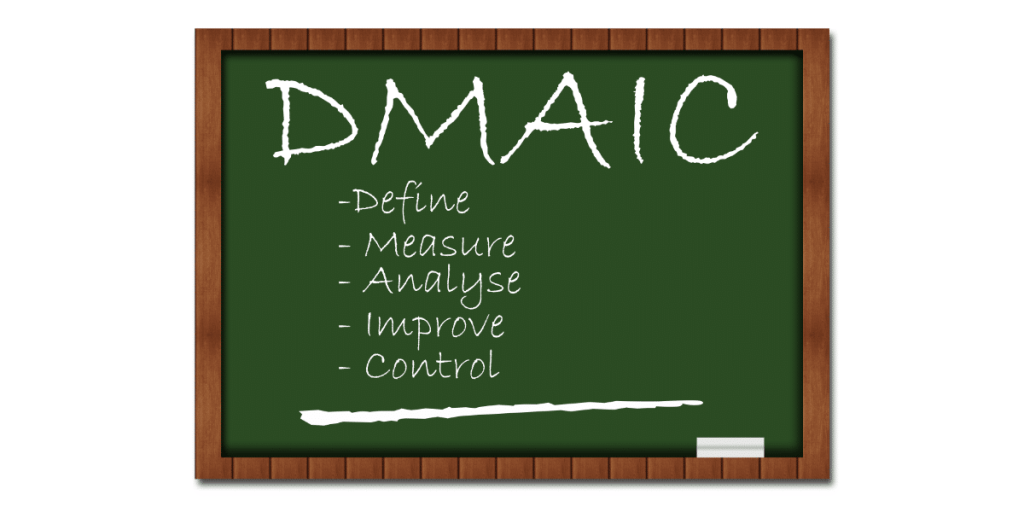Six Sigma Management Methodology is a data-driven approach to improving business processes and reducing defects. It has become a popular management technique for companies looking to improve their operations and increase efficiency. Six Sigma is a set of tools and techniques used to analyze and improve processes, with the goal of eliminating defects and reducing variability.
In this blog post, we will explore the definition and principles of Six Sigma Methodology, as well as the benefits it offers in team management. We will also provide some useful tools and tips for implementing this methodology, along with its pros and cons. Lastly, we will take a look at some examples of companies that have successfully used Six Sigma Management Methodology to improve their operations.
The Six Sigma Methodology: Achieving Quality and Efficiency in Management
Six Sigma is a data-driven methodology used in business management to improve the quality of products or services and reduce waste. The Six Sigma methodology aims to identify and eliminate the causes of defects and minimize variability in business processes. The methodology uses statistical analysis to identify and measure the root cause of problems and to develop a solution that will improve the process.
Think of Six Sigma as a quality control system that is used to eliminate defects and improve the overall quality and efficiency of a business process. The methodology is based on the idea that businesses should strive to achieve a maximum of 3.4 defects per million opportunities (DPMO). This level of quality ensures that products or services are of the highest quality, and customer satisfaction is guaranteed. The Six Sigma methodology is broken down into five phases: Define, Measure, Analyze, Improve, and Control (DMAIC).
The Define phase is where the goals of the project are established, and the team involved is identified. The Measure phase involves identifying the key characteristics of the process that need to be measured to determine the current quality level. In the Analyze phase, the data collected in the previous phase is analyzed to determine the root cause of the problems. The Improve phase is where solutions are developed and tested to solve the problems identified in the Analyze phase. The final phase, Control, is where a plan is implemented to ensure that the process continues to operate at the desired level of quality.
To Sum it up, the Six Sigma methodology is a valuable tool that can be used to provide a systematic approach to identifying and eliminating defects and reducing waste in business processes. It enables businesses to improve the quality of their products or services, increase customer satisfaction, and improve overall efficiency.
Definition and principles of Six Sigma Methodology
Six Sigma is an approach to quality management that originated in the manufacturing industry. It aims to reduce defects and improve overall quality by identifying and removing the causes of errors and minimizing variability in business processes. The methodology is based on statistical analysis and data-driven decision-making. There are five key principles of Six Sigma that guide the implementation of the methodology.
These principles are:
1. Focus on the customer: The ultimate goal of Six Sigma is to improve customer satisfaction by delivering high-quality products or services that meet their needs and expectations.
2. Use data and statistical analysis: Six Sigma relies on data and statistical tools to identify the root causes of defects and measure the effectiveness of process improvements.
3. Eliminate variation: Variability in business processes can lead to defects and errors. Six Sigma seeks to minimize variation and standardize processes to improve quality and efficiency.
4. Continuous improvement: Six Sigma is an ongoing process of continuous improvement. It requires a culture of continuous learning, experimentation, and innovation to drive long-term success.
5. Focus on business results: Six Sigma is ultimately about improving business performance. It requires a focus on measurable results, such as increased revenue, reduced costs, and improved productivity. In summary, Six Sigma is a data-driven approach to quality management that aims to reduce defects and improve overall business performance.
Its key principles are customer focus, data analysis, variation reduction, continuous improvement, and a focus on measurable results.
Benefits of Six Sigma in Team Management
Six Sigma is a methodology that focuses on improving business processes and reducing defects. It is often used in manufacturing, but it can also be applied in team management. Here are some benefits of using Six Sigma in team management:
Improved Communication
Six Sigma emphasizes the importance of clear communication in achieving quality results. By using Six Sigma in team management, team members can communicate effectively and efficiently, thereby reducing misunderstandings and errors that may arise from miscommunication.
Increased Productivity
One of the key benefits of Six Sigma in team management is that it helps increase productivity. By identifying and eliminating waste and inefficiencies in the team’s processes, Six Sigma can help the team complete tasks more quickly and efficiently, resulting in increased productivity.
Better Quality Results
Six Sigma is all about delivering consistent, high-quality results. By implementing Six Sigma in team management, teams can identify and address defects, errors, and mistakes, resulting in better quality results that meet or exceed customer expectations.
Enhanced Problem-Solving Skills
Another benefit of Six Sigma in team management is that it helps enhance problem-solving skills. Teams can use Six Sigma tools and techniques to identify the root cause of problems and develop effective solutions that address the underlying issues.
Increased Customer Satisfaction
By implementing Six Sigma in team management, teams can improve the quality of the products or services they deliver, resulting in increased customer satisfaction. This can, in turn, lead to increased customer loyalty and repeat business. In summary, Six Sigma is a valuable methodology that can be applied in team management to improve communication, increase productivity, deliver better quality results, enhance problem-solving skills, and increase customer satisfaction.
Tools & Tips for Implementing Six Sigma Methodology
Implementing Six Sigma methodology requires careful planning and execution. One of the most important steps in the process is selecting the right tools to help you achieve your goals.
Here are some tools and tips that can help you succeed in your Six Sigma journey:
1. Define the problem: Before you start implementing Six Sigma methodology, it’s essential to define the problem you’re trying to solve. Without a clear definition, you’ll struggle to identify the root cause of the problem, and your efforts may be wasted. Use tools like the 5 Whys or the Fishbone diagram to help you identify the problem’s underlying causes.
2. Measure the process: Once you’ve defined the problem, you need to measure the process’s key metrics. This includes identifying the process inputs and outputs and collecting data to track performance. Use statistical tools like control charts or histograms to analyze the data and identify trends.
3. Analyze the data: Once you’ve collected the data, it’s time to analyze it. Use tools like Pareto charts or Scatter diagrams to help you identify the most significant factors contributing to the problem. This will help you focus your efforts on the areas that will have the most significant impact.
4. Improve the process: After you’ve identified the root cause of the problem, it’s time to start making improvements. Use tools like the Plan-Do-Study-Act (PDSA) cycle or the DMAIC (Define, Measure, Analyze, Improve, Control) process to help you make changes and monitor their effectiveness.
5. Control the process: Once you’ve made improvements, it’s essential to control the process to ensure that the changes you’ve made stick. Use tools like process maps or flowcharts to help you document the process and identify areas for improvement. In conclusion, implementing Six Sigma methodology requires careful planning and execution.
By using the right tools and following these tips, you can increase your chances of success and achieve your goals.
Pros and Cons of Six Sigma Management Methodology
Six Sigma is a data-driven management methodology that aims to improve business processes by reducing defects and minimizing variability. It is a systematic approach that relies on statistical analysis to identify the root causes of problems and develop solutions to fix them. However, like any other management methodology, Six Sigma has its pros and cons.
Pros:
1. Improved Quality: Six Sigma is focused on improving the quality of products or services by reducing defects and errors. This leads to increased customer satisfaction and loyalty, which ultimately translates into higher profits.
2. Data-Driven: Six Sigma relies on data and statistical analysis to identify and solve problems. This ensures that decisions are based on objective facts rather than subjective opinions.
3. Increased Efficiency: By reducing variability and eliminating waste, Six Sigma can help organizations become more efficient and productive.
4. Employee Engagement: Six Sigma involves employees at all levels of the organization in the improvement process. This not only helps to identify problems and develop solutions but also increases employee engagement and motivation.
Cons:
1. Time-Consuming: Six Sigma projects can take a long time to complete, especially in large organizations. This can be a challenge for organizations that need to see results quickly.
2. Costly: Implementing Six Sigma can be expensive, especially if an organization needs to hire external consultants or invest in new technology.
3. Resistance to Change: Six Sigma requires a cultural shift in the organization, which can be difficult to achieve. Resistance to change can be a significant barrier to Six Sigma implementation.
4. Overemphasis on Data: Six Sigma relies heavily on data and statistical analysis, which can sometimes lead to a lack of consideration for other factors that may be important in decision-making.
In conclusion, Six Sigma is a powerful management methodology that can help organizations achieve significant improvements in quality, efficiency, and productivity. However, it is not without its challenges. Organizations should carefully consider the pros and cons of Six Sigma before deciding whether to implement it.
Examples of Companies that Use Six Sigma Management Methodology
Six Sigma is a popular methodology used by companies worldwide to streamline processes and eliminate inefficiencies. Here are some examples of companies that have successfully implemented Six Sigma to improve their operations:
General Electric (GE)
GE is one of the most well-known companies that uses Six Sigma methodology. The company has been implementing the methodology since the late 1990s and has saved billions of dollars in the process. GE’s success with Six Sigma has made it a model for other companies to follow.
Ford Motor Company
Ford Motor Company is another company that has implemented Six Sigma methodology with great success. The company has used the methodology to improve its manufacturing processes, resulting in improved quality and reduced costs.
Amazon
Amazon is a company that has used Six Sigma methodology to streamline its warehouse and logistics processes. The company has implemented the methodology to improve order accuracy and reduce delivery times, resulting in increased customer satisfaction.
Bank of America
Bank of America is a financial institution that has implemented Six Sigma methodology to improve its customer service processes. The company has used the methodology to reduce wait times and improve the overall customer experience. In conclusion, Six Sigma methodology is used by companies worldwide to improve their operations and eliminate inefficiencies. These examples demonstrate how companies in a variety of industries have successfully implemented Six Sigma to improve their processes and achieve significant cost savings.
The Benefits of Implementing Six Sigma Management Methodology
Are you looking for a way to improve your business processes and enhance customer satisfaction? Look no further than Six Sigma management methodology. This data-driven approach to quality control has been embraced by companies across a range of industries and has proven to be highly effective in reducing defects and improving overall performance.
Think of Six Sigma as a roadmap that guides your organization towards process improvement. By measuring the performance of your processes and identifying areas for improvement, you can systematically eliminate defects and minimize variability. The end result is a more efficient, effective, and customer-focused organization.
One of the key benefits of Six Sigma is that it empowers employees at all levels of the organization to take ownership of the improvement process. By involving everyone from frontline workers to senior executives, you create a culture of continuous improvement that is essential for staying competitive in today’s marketplace. Another benefit of Six Sigma is that it provides a structured approach to problem solving.
By using tools like DMAIC (Define, Measure, Analyze, Improve, Control), you can systematically identify and address the root causes of problems. This helps to ensure that your solutions are effective and sustainable over the long term.
Finally, Six Sigma can help you to better understand your customers’ needs and expectations. By gathering and analyzing data on customer satisfaction, you can identify areas where you are falling short and take steps to address those issues. This can lead to increased customer loyalty and a stronger reputation in the marketplace.
In summary, Six Sigma management methodology is a powerful tool for improving your business processes and enhancing customer satisfaction. By empowering your employees, providing a structured approach to problem solving, and focusing on customer needs, you can build a more efficient, effective, and customer-focused organization.
Conclusion
In conclusion, Six Sigma management methodology is a powerful tool that can help organizations achieve their goals by minimizing errors and maximizing efficiency. With its emphasis on data-driven decision making and continuous improvement, Six Sigma can help teams work together more effectively and achieve better results.
While there are some potential downsides to Six Sigma, such as the need for specialised training and the risk of overemphasising process at the expense of creativity, many companies have found great success with this approach. By following the principles of Six Sigma and leveraging the right tools and techniques, organizations can achieve greater efficiency, higher quality, and increased customer satisfaction.












